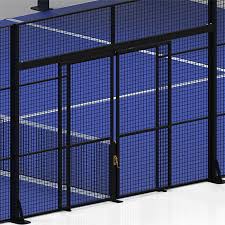

The Evolution and Impact of Racquetball and Tennis Manufacturers
In the vibrant world of racquet sports, racquetball and tennis hold a privileged place, each enjoying a vast array of players worldwide. The manufacturers behind the equipment used in these sports play a crucial role in shaping the player experience, promoting innovation, and enhancing performance. This article explores the evolution of racquetball and tennis manufacturers, their contributions to the sports, and the future of equipment in these thrilling games.
The Historical Context
Racquetball was invented in the 1950s, and its rapid rise in popularity quickly led to a demand for specialized equipment. Early manufacturers had to create racquets that were lightweight, durable, and capable of withstanding the fast-paced nature of the game. Companies like Ektelon and HEAD were among the pioneers, dedicating themselves to research and development that addressed the unique needs of racquetball players.
On the other hand, tennis has a much longer history, tracing its roots back to the 12th century. The evolution of tennis racquets from wooden frames to modern composite materials illustrates the advancements made over centuries. Manufacturers like Wilson, Babolat, and Prince have pushed the boundaries, creating racquets that balance power, control, and spin, catering to players of all levels.
Innovations in Design and Materials
One of the most significant contributions of racquetball and tennis manufacturers has been the innovation in materials. The introduction of graphite, carbon fiber, and other advanced composites has revolutionized racquet design. These materials not only reduce the weight of the racquets but also enhance their rigidity and responsiveness, allowing players to generate more power and precision without sacrificing control.
Furthermore, manufacturers have developed specialized strings and grips that improve comfort and performance. For instance, modern strings made from synthetic materials offer better durability and tension maintenance than their natural counterparts. Grips are also ergonomically designed to provide optimal handling and reduce the risk of injury, ensuring players can perform at their best.
Customization and Personalization

In recent years, personalization has become a trend among manufacturers. Players are no longer content with one-size-fits-all solutions; they seek equipment that reflects their unique style and enhances their game. Companies now offer customizable racquets where players can select the frame type, weight, grip size, and even the string tension. This level of customization allows players to tailor their equipment to match their individual playing style, whether they prefer a more defensive or aggressive approach.
Environmental Considerations
As global awareness of environmental issues grows, manufacturers are increasingly focusing on sustainability. Innovations in eco-friendly materials and manufacturing processes are becoming prevalent in the industry. Brands like Wilson have made commitments to reduce their carbon footprint, incorporating recycled materials into their products and packaging. This not only appeals to environmentally-conscious consumers but also sets a precedent for responsible manufacturing practices within the sports industry.
The Future of Racquet Sports Equipment
Looking ahead, the future of racquetball and tennis manufacturers appears promising. The integration of technology continues to redefine how players train and compete. Smart racquets equipped with sensors can track performance metrics such as swing speed, spin, and impact locations. This data allows players to analyze their game more effectively and make informed adjustments to their technique.
Moreover, advances in augmented reality (AR) and virtual reality (VR) could revolutionize how players engage with the sport. Training programs may arise that use VR to simulate match conditions, providing a safe and controlled environment for skill development. Such innovations could make training more accessible to players of all ages and skill levels.
Conclusion
The journey of racquetball and tennis manufacturers has been marked by innovation, dedication, and a commitment to enhancing player performance. As technology continues to evolve and environmental concerns become increasingly pressing, these manufacturers are poised to lead the charge in creating a more dynamic, sustainable, and personalized playing experience. The future of racquet sports equipment looks bright, and players can look forward to a new era of advancements that will redefine the way they play.
High-Performance Industrial Flooring Solutions China Paddle Tennis Court for Sale
High-Performance Industrial Flooring Solutions Durable & Cost-Effective
Homogeneous Transparent Floor – Durable & Stylish Rubber Floor Solutions
Premium Homogeneous Transparent Floor for Durable & Stylish Spaces Rubber Floor Solutions
Premium Sports Floor Solutions Durable PVC Sports Floor & Rubber Floor for Gyms
Durable Rubber Composite Floor Premium Rubber Floor & Mats Solutions